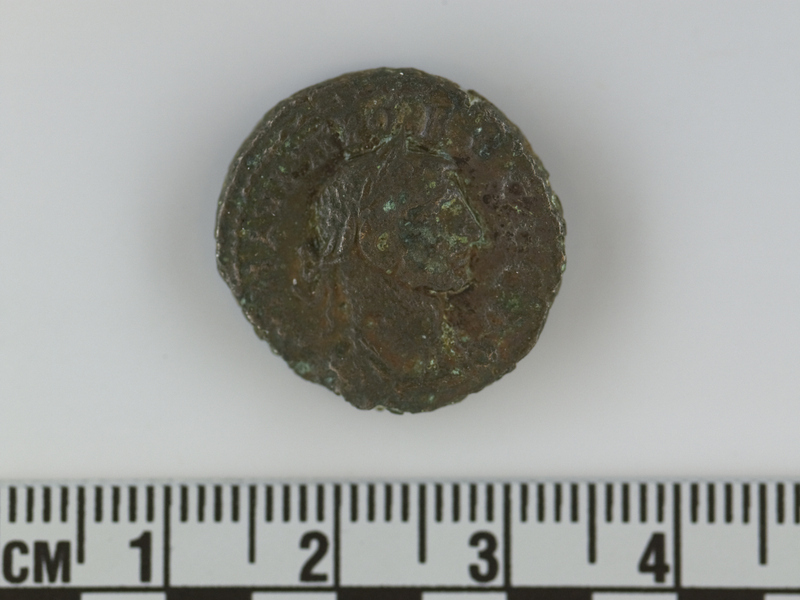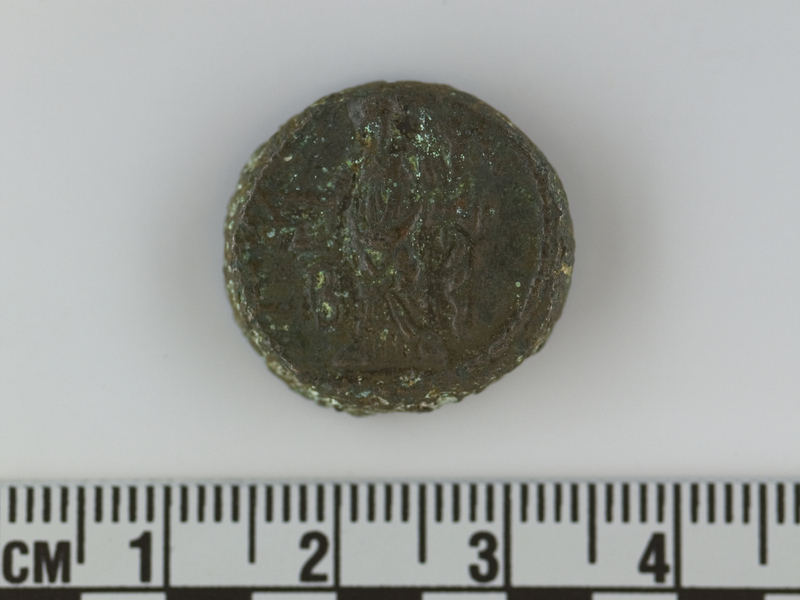Coin Item Number: 3206/7 from the MOA: University of British Columbia


Description
Roman coin of Probus (276-282). Obverse: bust of an emperor, facing right; he wears a laurel crown; to left, inscription is (in Greek) A K M AUR PROBOS SEB. Obverse: draped figure (Elpis, Greek spirit of Hope), standing to left, lifting hem of chiton with one hand, to right, holding flower; to left, inscription 'L / B'.
History Of Use
"A K M AVP ΠPOBOC CEB” extends into “Autokrator Kaisaros Markos Aurelios Probos Sebastos,” and translates to “Emperor Caesar Marcus Aurelius Probus Augustus”; Tetradrachm (denomination); regnal year 2 (276-77). When Rome conquered Egypt, it preserved the closed currency system already in place there, as well as the local designs of coinage; the use of Greek mythological figures paid respect to local traditions, while the depiction of the emperor tied the coin to Roman authority. These Greek-style coins, called “Alexandrian Coins”, circulated only within Egypt. Merchants and other travellers had to exchange their coinage at the border. At the time this coin was made, Alexandrian coins were severely degraded in value and quality. Tetradrachms like this one were originally a valuable denomination made up of silver, but by the time of this coin’s minting, they were the most common coin and were mostly bronze.
Narrative
References: Koln 3128; Dattari 5533; Milne 4531; Emmett 3987.
Item History
- Made in Alexandria, Egypt between 276 and 277
- Owned by David Cunningham before October 27, 2016
- Received from David Cunningham (Donor) on October 27, 2016
What
- Name
- Coin
- Identification Number
- 3206/7
- Type of Item
- coin
- Material
- bronze metal
- Overall
- height 0.3 cm, diameter 2.0 cm
Who
- Culture
- Roman
- Previous Owner
- David Cunningham
- Received from
- David Cunningham (Donor)
Where
- Holding Institution
- MOA: University of British Columbia
- Made in
- Alexandria, Egypt
When
- Creation Date
- between 276 and 277
- Ownership Date
- before October 27, 2016
- Acquisition Date
- on October 27, 2016
Other
- Item Classes
- metalwork
- Condition
- fair
- Accession Number
- 3206/0007